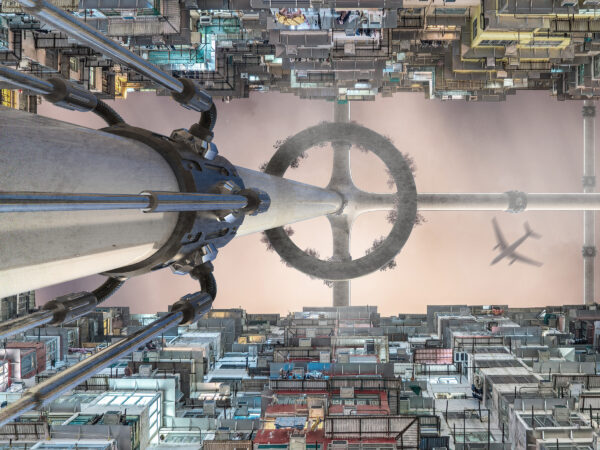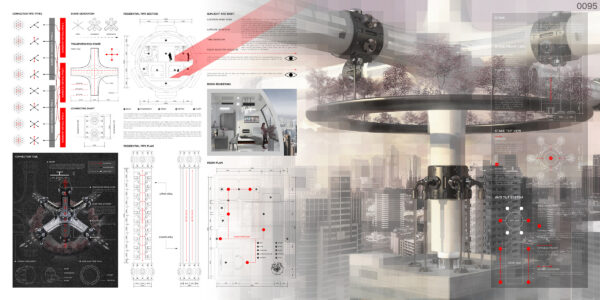Honorable Mention
2022 Skyscraper Competition
Zheng Xiangyuan
China
The population of Hong Kong has shown a continuous growth from 7,185,996 in 2015 to 7,496,981 in 2020. People have built skyscrapers in order to create more space on limited land. In the beginning, skyscrapers do provide more space for people, but with the increasing population, the number of skyscrapers will continue to increase, and eventually, they will fill the land of Hong Kong. How are we going to create new space for people to use when we can’t build new skyscrapers anymore?
Hong Kong is one of the cities with the highest population density in the world, its population density is 23.8 times the optimal urban population density. Only 1,106.66k㎡ of land carries 7,496,981 people, Nearly 80% of them live in coastal areas, which make up only 15 percent of Hong Kong’s total area. Over the past decade, Hong Kong’s population has grown by an average of 0.8% per year. Hong Kong faces a very serious population problem. As the population continues to increase, the average living space of people will continue to decrease. How to create more space in a limited area has become a serious problem for us to think about.
Skyscrapers can effectively save the floor area. With the continuous increase of Hong Kong’s population, there are 333 skyscrapers in Hong Kong today, which ranks first in the world. But even though skyscrapers can provide more space than ordinary buildings, the average Hong Kong resident still lives in very little space. In Hong Kong, a city with very dense buildings, there will be some unused gaps between skyscrapers. We use these gaps to convert them into space that can be used by people. This method can provide more usable space in a limited area.
We insert huge pipes into the skyscrapers, and inside the pipes is space for people’s activities and transportation, which not only solves the problem of insufficient space but also strengthens the connection between buildings. The transportation system in the pipe will provide a new way for people to commute, and the streets will become less crowded. We call this Intubation. Intubation can make people move in the gap between skyscrapers and make full use of the unused space in the city.
The building itself is an independent existence, and there is not much communication between the two buildings. When an individual’s main activities are concentrated in one building, the individual may have no experience of entering the neighboring building. When Intubation connects two skyscrapers, people can more easily communicate with people in other skyscrapers through Intubation. Intubation can also be seen as a three-dimensional road network in the air, which can share part of the pressure from commuters on the streets.
Intubation passes through the gap between skyscrapers and connects them, like building a bridge between skyscrapers, which enhances the connection between skyscrapers. When the Intubation grows to a certain extent, they become a road network in the air. Intubation is divided into two structures, connecting pipe and residential pipe. The connecting pipe connects the residential pipe at the intersection, and the residential pipe is used for people’s activities. As the Intubation system grows, we can replicate multiple layers and connect the upper and lower layers through specific positions, because this part of the space has a vertical height.
A more efficient solution is that instead of replicating the layers sequentially as the Intubation grows, we can make the Intubation three-dimensional from the beginning and fill in unused spaces as the Intubation grows. When all the gaps in this area are filled, the Intubation cannot continue to grow. At this time, the space in this area has been used to the greatest extent. We can expand the Intubation to other areas.

















